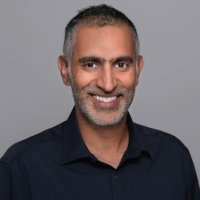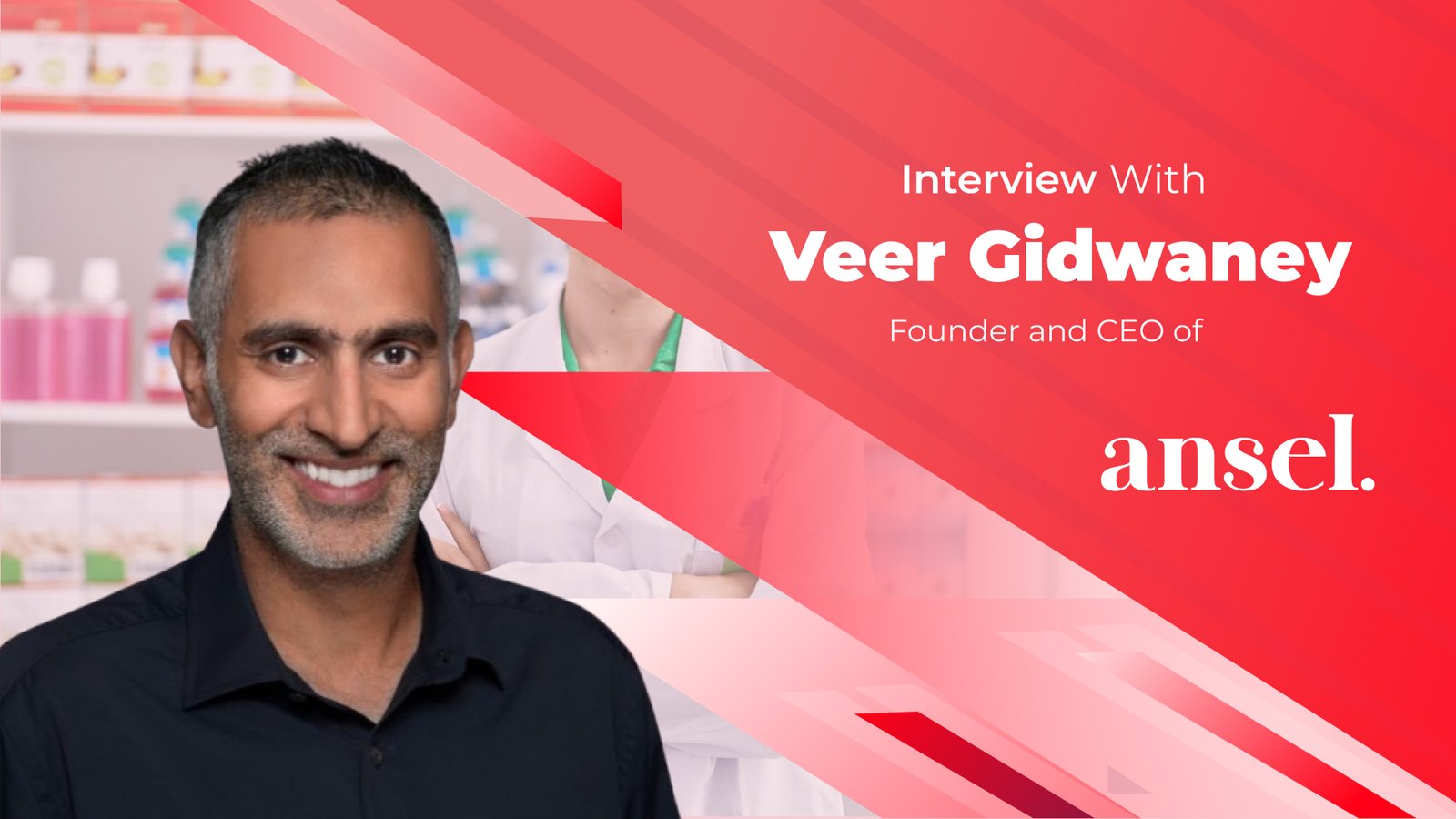Discover how Veer Gidwaney, CEO of Ansel, is redefining healthcare benefits with innovative, portable insurance solutions.
1. To start, can you please walk us through your professional journey and what inspired you to launch Ansel?
Throughout my career in healthcare and technology, I saw a recurring problem: even people with insurance were hit with surprise medical bills and out-of-pocket costs that left them financially exposed. With over 100 million Americans facing surprise medical bills each year, it was clear the system wasn’t working.
Traditional insurance hasn’t kept pace with 30 years of healthcare inflation. Deductibles have soared, but coverage hasn’t evolved. I launched Ansel to address this gap. Our supplemental insurance covers over 13,000 conditions and pays cash benefits upon diagnosis, no accident or hospitalization requirements required.
We designed Ansel to outperform traditional plans on two key metrics: loss ratio and utilization. By covering more, we ensure more people get value from their coverage. The result is a smarter, more effective insurance product built for today’s healthcare realities.
2. Ansel is focused on can help in reimagining health benefits for non-traditional workers. What challenges did you set out to solve, and how is Ansel addressing them differently?
We’ve designed a product that meets people where they are, with coverage for over 13,000 conditions and no requirement for accidents or hospitalizations. This broad spectrum ensures more people get real value from their plan. What sets Ansel apart is how we’ve streamlined the experience. Through medical claims integration, members don’t need to file claims manually. Our system automatically identifies eligible medical encounters and pays out benefits, eliminating paperwork and delays. This means higher utilization, better outcomes, and peace of mind.
So quite simply, Ansel was built for everyone. It was built for a wide set of needs, and can be implemented alongside or in place of most traditional benefits that might be in place. We see that this can help non-traditional employees, like part-timers, remote workers, and more because it gives them the financial protection they need without requiring them to work for a large company, or work within the traditional 9-to-5 model.
3. The concept of portable benefits is gaining traction. How do you define “portable benefits,” and why are they critical in today’s workforce?
We’re seeing a shift in how individuals define “employment”, and a rise in options and interest for flexible work arrangements. For individuals who may decide to leave traditional employment roles, and pursue these options, portability provisions on existing benefits may allow them to keep coverage. As job insecurity, job mobility, and job diversity increases, this can serve as a valuable component to a health insurance offering.
At Ansel, we offer portability options so members can continue their coverage directly with us if they leave their employer. That means ongoing protection against 13,000+ illnesses and injuries, no matter where work takes them next. It’s a simple but powerful way to give people control over their health security.
4. What have you learned from the rollout of Ansel’s platform that could serve as a blueprint for other employers or benefit providers?
The biggest takeaway is the power of simplicity and having a clear vision from day one. We designed Ansel as a unified, connected ecosystem, unlike traditional platforms built in fragmented or bespoke silos. That foundation has made everything easier and more effective.
For brokers, it means an easy-to-learn product and a simpler pitch. For employers, it enables paperless, same-day implementation and streamlined admin. And for members, it drives engagement and claim utilization by making benefits easy to understand and access.
This also has allowed us to offer medical claims integration (MCI), which we built our platform to support from the start. When the time came, enabling MCI was a natural extension, not a rebuild. That kind of foresight, building with the end experience in mind, has been key to our success and should be a blueprint for others.
5. How do you balance innovation in benefits delivery with the complex regulatory and compliance landscape in healthcare?
We operate from the belief that regulators want to help. If you can clearly show the value you’re delivering, there’s usually a path forward.
Transparency is key. We’ve found that designing for compliance and building with integrity actually enables innovation rather than restricting it. When your mission aligns with improving outcomes, regulators become allies.
6. In your view, what role should employers play in supporting flexible, independent, or gig workers, especially when it comes to long-term financial and health security?
Employers need to ensure they have a clear understanding of the make-up of their workforce, and their demographics and needs so they can better tailor benefits plans with the options that exist for non-traditional workers, who are often vital in industries like entertainment, hospitality, and logistics.
A great example is Live Nation. They bundled Ansel with a MEC plan and virtual care for their part-time event staff, resulting in nearly a 50% increase in participation compared to offering the MEC plan alone. That bundled, inclusive approach not only provides real financial protection but also boosts engagement and retention.
By offering simple, modular benefits that meet diverse needs, especially through bundled plans, employers can support long-term health and financial stability for all workers, regardless of employment type.
7.What kind of partnerships or ecosystem support is needed to scale portable innovative benefits more broadly?
Scaling new benefits requires a mission-aligned ecosystem that spans both ends of the market. At Ansel, we’ve taken a dual-track approach: forming strategic partnerships with carriers who share our vision of inclusive, modern coverage, and building deep relationships with brokers who are eager to bring innovative solutions to their clients.
It’s about leaning into being a small fish in a big pond, finding the right partners who believe in what we’re building and are invested in seeing it grow. Brokers, in particular, play a critical role in driving adoption. When they understand and champion the product, it builds trust and accelerates reach.
Ultimately, success comes when everyone in the benefits chain, carriers, brokers, employers, is aligned around creating accessible, portable coverage that meets the needs of today’s diverse workforce.
8. On a personal level, what’s your strategy for staying ahead in an industry that’s undergoing such rapid change?
My strategy is to stay relentlessly focused on building for the experience we want our members to have, not just today, but in the future. That’s why we prioritized building a connected platform that could support features like medical claims integration (MCI) from day one. It allows us to innovate faster and remove friction for everyone involved, from brokers to employers to members.
That approach has a real impact. Thanks to MCI, members don’t have to file claims manually, which dramatically simplifies the process. And we’re seeing the results: Ansel has maintained an NPS in the high 80s for nearly two years, compared to an industry average of just 22. Staying ahead, for me, means anticipating what great looks like and building the foundation to get there before the market catches up.
9. What advice would you give to employers or HR leaders who are unsure how to approach benefits for their growing non-traditional workforce?
The answer when adding any type of new benefit remains the same for all types of works— is this something that brings real value? Start by asking better questions: What’s the loss ratio? Is the coverage actually comprehensive? What’s included, and what’s not? Transparency is key. Work with partners who are willing to share real data and build products that are designed to be used, not just offered.
When workers trust their coverage, they’re more likely to seek timely care and less likely to need extended leave or trigger downstream costs like disability or workers’ comp. According to the Integrated Benefits Institute, untreated illness leads to 1.5 billion lost workdays and costs employers $575 billion annually.A robust benefits strategy for non-traditional workers isn’t just about generosity, it’s about smart business.
The path forward starts with choosing mission-aligned, consumer-focused partners who are rethinking benefits from the ground up. And it doesn’t require starting from scratch, established companies can partner with modern solutions to stay competitive in a shifting market.
Ultimately, the goal should be to make health insurance feel usable, trustworthy, and simple.
10. Finally, what’s your vision for the future of work and health benefits—and what’s one takeaway you hope readers leave with after learning about Ansel’s mission?
We envision a future where no one faces financial burdens due to health hardship. That means building health benefits that are comprehensive, portable, and designed for how people actually work today, not how they worked 50 years ago.

Veer Gidwaney
Veer Gidwaney is the Founder and CEO of Ansel Health. Previously, he was Co-founder and CEO of Maxwell Health, which was acquired by Sun Life in 2018. Maxwell Health was ranked #100 on Deloitte’s 2017 Technology Fast 500 list. Veer is a proven entrepreneur and insurance innovator whose energy and experience have long been devoted to solving the problems of our time. Veer lives with his family in the greater New York City area.

